
Vacuum box weld testing equipment is a specialized tool used in non-destructive testing (NDT) to inspect welds for leaks and defects. This comprehensive guide explores the principles, applications, benefits, and considerations associated with vacuum box weld testing equipment.
Vacuum box testing is a non-destructive examination used when trying to locate weld seam leaks. A vacuum box and a compressor create a high or low pressure vacuum while a detergent solution is applied to the test area. The detergent bubbles, making leaks visible within the created pressure envelope.
| Item Description | Videos |
Model No |
Runs on Vacuum Pump and Compressor |
Dimensions: |
| Flat Bottom Weld Test box for testing butt welds on flat surfaces | BHFFB30-L With Battery Backup LED Light |
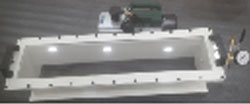 |
30.00" L x 8.00" W x 6" H 800 mm x 200 mm x 150 mm |
|
| BHFFB40-L With Battery Backup LED Light |
40.00" L x 8.00" W x 6" H 1000 mm x 200 mm x 150 mm |
|||
| Inside Corner Weld Test Vacuum Box Bubble Leak Testing Corner vacuum boxes are specifically designed for testing the inside corner, where the bottom meets the sidewall at 90 degrees |
BHFICV-5 With Battery Backup LED Light |
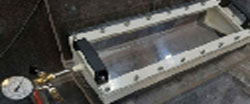 |
20"L x 5 1/4"W x 5 1/4“ H 500 mm x 125 mm x 125 mm |
|
| BHFICV-6 With Battery Backup LED Light |
24"L x 5 1/4"W x 5 1/4“ H 600 mm x 125 mm x 125 mm |
|||
| Complete Transparent Flat Bottom Weld Test box for testing butt welds on flat surfaces |
BHFFBC320815 With Battery Backup LED Light |
|
32.00" L x 8.00" W x 1 1/2" H 800 mm x 200 mm x 35 mm |
|
| BHFFBC400815 With Battery Backup LED Light |
40.00" L x 8.00" W x 1 1/2" H 1016 mm x 200 mm x 35 mm |
|||
| Flexible Transparent Angular Weld Test Vacuum box for testing butt welds on Curved and Cylindrical surfaces |
BHFAVB2040 |
|
16.00" L x 8.00" W x 1 " H 400 mm x 200 mm x 20 mm |
|
| Complete Transparent Flat Bottom Weld Test box for testing Overlap welds on flat surfaces |
BHFLAP 8 – 8 mm lap BHFLAP 10 – 10 mm lap BHFLAP 12 – 12 mm lap |
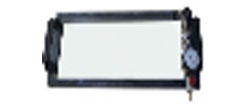 |
16.00" L x 8.00" W x 1 " H 400 mm x 200 mm x 35 mm |
|
| Sea Chest Angular Vacuum Weld Test box for testing butt welds on Sea Chest in Large ships |
BETSEA1000 |
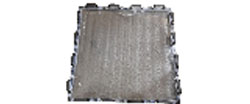 |
39.00" L x 39.00" W x 1 " H 1000 mm x 1000 mm x 40 mm |
|
| BETSEA1200 |
39.00" L x 39.00" W x 1 " H 1000 mm x 1000 mm x 40 mm |
|||
| Outside Corner Vacuum Weld Test Box Weld Bubble Leak Testing Corner vacuum boxes are specifically designed for testing the Outside corner, where the bottom meets the sidewall at 90 degrees |
BHFOCV-L |
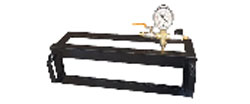 |
20"L x 5 1/4"W x 5 1/4“ H 500 mm x 100 mm x 100 mm |
|
| Complete Transparent 3x90 Degree Inner Edge Weld Test Vacuum Weld Box |
BHFFBC390 |
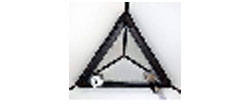 |
10.6" L x 10.6" W x 10.6" H 270 mm x 270 mm x 270 mm |
|
Complete Transparent |
BHFFBC390-O |
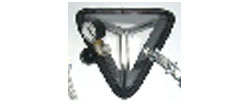 |
10.6" L x 10.6" W x 10.6" H 270 mm x 270 mm x 270 mm |
Welding is a critical process in various industries, from construction and manufacturing to aerospace and energy. Ensuring the quality and integrity of welded joints is essential to prevent leaks, structural failures, and other potential hazards. Vacuum box weld testing equipment is a valuable tosol used to identify surface-breaking defects in welded seams and assess the quality of welds without damaging the material.
Principles of Vacuum Box Weld Testing Vacuum box weld testing relies on the principle of creating a vacuum inside a sealed chamber placed over the weld to be inspected. The chamber is then pressurized with a suitable liquid, typically water or a specialized testing solution.
If there are any leaks or defects in the weld, the liquid will be drawn into the chamber due to the pressure difference, making the defects visible. This method is particularly effective for detecting leaks in welds that are not readily accessible for direct visual inspection.
Applications of Vacuum Box Weld Testing Equipment:
1. Pipeline Construction: Vacuum box weld testing is used to inspect welds in pipelines to ensure their integrity and prevent leaks in the transportation of fluids and gases.
2. Aerospace and Aviation: Welds in aircraft structures, engine components, and aerospace systems undergo vacuum box testing to ensure their reliability and safety.
3. Shipbuilding: In marine industries, vacuum box testing is crucial for inspecting welds in ship hulls and critical components to prevent water ingress and structural issues.
4. Pressure Vessels: Welds in pressure vessels used in industries such as petrochemicals and energy undergo vacuum box testing to prevent catastrophic failures.
5. Construction and Infrastructure: Welds in structural components of buildings, bridges, and infrastructure are inspected using vacuum box testing to ensure their safety and longevity.
1. Early Defect Detection: Vacuum box testing allows for the early detection of surface-breaking defects and leaks in welds, preventing potential failures and hazards.
2. Non-Destructive Testing: This method is non-destructive, meaning it does not damage the weld or the material being tested, making it suitable for critical components.
3. Cost Savings: Identifying defects early reduces the need for costly repairs or replacements later in the project lifecycle.
4. Improved Safety: By identifying defects and leaks, vacuum box testing enhances the safety of structures and systems that rely on welded joints.
5. Quality Assurance: Vacuum box testing ensures that welds meet quality standards and specifications, leading to reliable and durable structures.
1.Surface Preparation: The surface around the weld area must be properly cleaned and prepared to ensure accurate test results.
2.Testing Solution: The choice of testing solution depends on the type of material and the specifications of the testing procedure.
3.Sealing: Proper sealing of the vacuum box and the area around the weld is essential to create a reliable vacuum chamber.
4.Operator Training: Operators conducting vacuum box testing should receive proper training to ensure accurate and consistent results.
5.Safety Measures: Proper safety precautions, including wearing appropriate protective gear, should be followed during the testing process.
Innovation, Quality, Prompt Service, On time delivery.
Aimed at delivering value and achieving complete customer satisfaction.
Expertise is in manufacturing high-quality products.
| HOME |
| ABOUT US |
| CAREER |
| CONTACT US |
| DOWNLOADS |
| PRIVACY POLICY |
For all Your Vacuum Chambers,
Vacuum Degassing Chamber, Bubble test Chamber
and Filling machine needs.